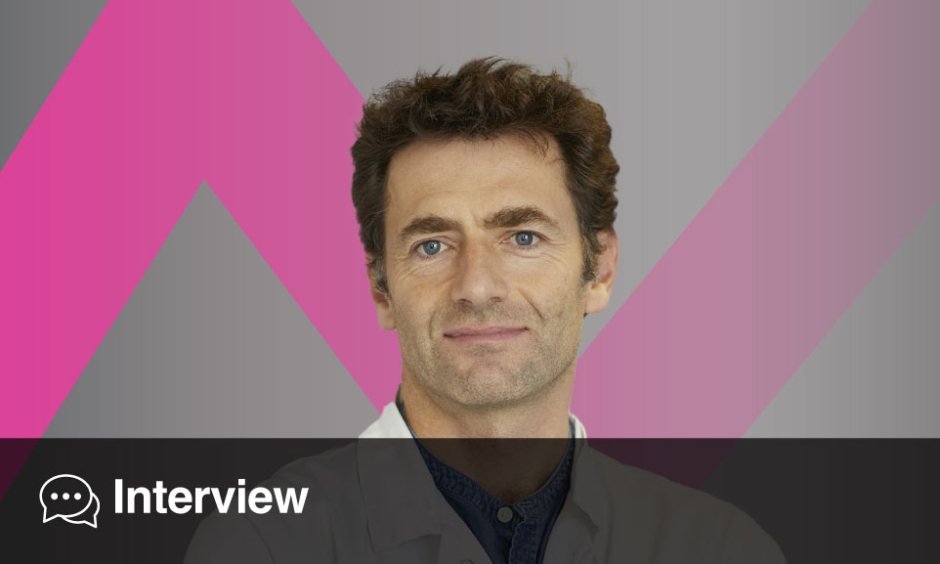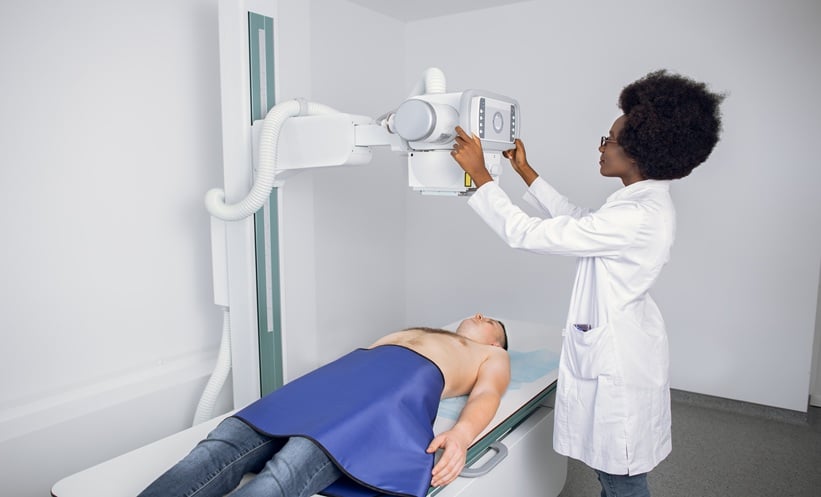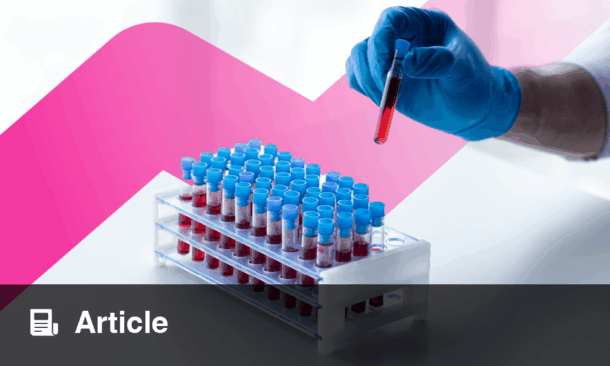F-Xavier Lescure | European Society of Clinical Microbiology and Infectious Diseases (ESCMID) Emerging Infections Subcommittee Director; Professor, APHP Hôpital Bichat-Claude Bernard; Université Paris Cité, France
Citation: EMJ Microbiol Infect Dis. 2025;6[1]:43-47. https://doi.org/10.33590/emjmicrobiolinfectdis/FNYA3891
![]()
How do you envision the role of the European Society of Clinical Microbiology and Infectious Diseases (ESCMID) evolving in response to the increasing frequency and complexity of emerging infectious threats globally?
The quality of the response depends on the quality of the preparedness phase, particularly today, when we are living in a chronic and perpetual systemic crisis. Decision-makers are under constant pressure, and it’s difficult for them to prepare for the future when they are fully occupied with managing the crisis of the day, whether political, climate-related, or other. The response does not start on day one of the outbreak; it starts during the preparedness phase. But today, preparedness is a very complex process. The challenge in this era of continuous crisis is to find the time and space to anticipate, rather than constantly managing one crisis after another.
For me, the solution lies in accumulating experience and continuously learning from crisis management. We must manage crises partly by listening to what the crisis is telling us, to better understand the world we live in; not to predict, but to anticipate the future. In that regard, ESCMID plays a key role within the European landscape of infection control. Its most valuable characteristic is its composition. By definition, ESCMID is a society for both infectious diseases and clinical microbiology. But beyond that, we include experts in infection prevention and control, epidemiology, public health, veterinary medicine, and basic research. This diverse, multidisciplinary structure is very important and precious.
Secondly, the geographic reach of ESCMID is significant. Although it is a European society, more than a quarter of its members are outside of Europe, in Asia, Africa, and the Americas, and this trend is growing. ESCMID stands at the crossroads: cross-discipline, cross-border, cross-culture, and cross-generation. What is impressive is the energy of the younger generation: 40% of ESCMID members are under 40 years old. The objective of ESCMID is simple: science for care. Today, science must be defended, and care must be protected. Robert Leo Skov, the current ESCMID President, carries this vision and creates a collective, positive, and kind spirit within the society: inclusive, cooperative, and with minimal administrative complications. That spirit is essential in the current context.
Another important aspect is the quality of our partnerships. Internally, we work with other ESCMID bodies (Education, Guidelines, and Antimicrobial Resistance [AMR] Subcommittees), and many study groups focused on emerging infectious diseases. Externally, we collaborate with national infectious diseases and microbiology societies, as well as intensive care unit and infection prevention and control societies, because emerging infectious diseases and epidemic risk are a transversal issue. We also have links with the European Centre for Disease Control and Prevention (ECDC), the European Commission through HERA, and in the future, we hope to work more with the World Health Organization (WHO).
Finally, ESCMID’s role is embodied in the Emerging Infections Subcommittee, a small and agile group with high-level expertise, well-balanced and rooted in a One Health approach. I hope that through its intelligence, education, communication, guidance, and science portfolios, we will be able to bring meaningful contributions to this very complex field.
Given your experience advising the French Ministry of Health during the COVID-19 pandemic, how do you plan to integrate crisis preparedness into ESCMID’s emerging infections strategy?
The COVID-19 crisis transformed me at different levels: as a clinician, as a researcher, as a citizen, as a father, as a husband, and as a human being.
During this very particular period, on the front line over the first year of the pandemic as a clinician and researcher, and in 2021 as the COVID advisor to the French Ministry for Health, I learned a lot. For the ESCMID Emerging Infections Subcommittee, I think the most important task is to anticipate events, and beyond the events themselves, to anticipate their consequences. It’s about recognising early signals, issuing alerts, thinking about the next steps, and always staying one step ahead, especially in terms of surveillance and analysis of epidemiological signals. It’s essential to interpret these signals within a multidisciplinary committee to ensure the most precise and informed analysis; epidemiologists alone are not enough. Because we include people from the field, we constantly consider the operational consequences and how processes on the ground will be affected.
Secondly, I would compare the Executive Committee of ESCMID to a government ministry. They need to be reassured about the situation, but this is not easy. It requires monitoring signals, surveillance data, and developments happening across the world. It’s important to provide them with timely, accurate information, as well as a robust and rational interpretation to rationalise the situation, not just describe it.
To do this well, we need to maintain a permanent connection with the field, and to honestly and fairly consider what is happening at the bedside, both in hospitals and in primary care settings. That part of the health system is often overlooked, but it’s vital to value those partners, stay in touch at every phase of an alert, and build a durable, trusted field network over time.
We must also acknowledge political and diplomatic constraints. In a Europe-based society like ESCMID, these realities matter. As such, it’s important to integrate this dimension, and to bring the strongest arguments to advocate for health, science, and infectious diseases. That is probably the best way to uphold a One Health vision in a complex and global context. Organisationally, I’ve learned that you must always keep your foot on the ball, but also a margin under the pedal. Because when the time comes to accelerate, and it will, you must have reserves of energy and time to respond effectively, being aware that all of us, within the Emerging Infections Subcommittee, will probably be demanded by our respective national duties.
And finally, communication is critical, not just in content, but in timing. It’s essential to be on time (not too early, not too late), and to target the message appropriately if we want to be effective and understood.
Can you share specific initiatives or collaborations the subcommittee is planning to strengthen surveillance and early response at the European level?
In terms of initiatives, I can summarise our work through the different portfolios we manage within the Emerging Infections Subcommittee; we have several key chapters.
The first is intelligence, which means proper analysis of epidemiological signals. This involves interpreting signals within a multidisciplinary group. To support this, we collaborate with the University of Amsterdam, the Netherlands, which helps us generate and send a weekly report on emerging infectious diseases worldwide, and we plan to offer it to all ESCMID members. This report is currently very focused on tropical diseases and travel medicine, but progressively, we aim to broaden its scope. We plan to include a vision of epidemic risk analysis, pandemic preparedness, and also a One Health dimension with components of animal surveillance and environmental monitoring to give a more comprehensive view of intelligence.
The second chapter is education. In the past few months, we’ve organised several webinars, in collaboration with organisations like the Infectious Diseases Society of America (IDSA), covering topics such as mpox, Marburg disease, or H5 influenza. We are also setting up a postgraduate education course in Seville, Spain, in October 2025. You can already subscribe; we invite everyone to join us for 2 days of intensive discussion around emerging infectious diseases. The objective is to help participants understand current phenomena and explain where we are today in this complex situation.
Another key initiative is guidelines. One of the ESCMID Executive Committee’s expectations is the ability to rapidly produce guidelines, or even living guidelines, in response to an emerging outbreak, epidemic, or pandemic. We’re currently piloting this with the mpox emergence, in collaboration with the Guidelines Subcommittee, to test how we can accelerate the process without compromising quality. Maybe these won’t always be formal ‘guidelines’, perhaps they will be recommendations or position papers, because the level and quality of evidence can evolve very quickly during a crisis. This is something we are actively reflecting on with the Guidelines Subcommittee.
Another example, though not exhaustive, is the development of a network of experts on emerging infectious diseases. The Subcommittee itself has 10 core members, but we recently launched an open call to expand this network and create rapid-response working groups, for instance, around H5 influenza or mpox. We received around 350 applications from colleagues in 35 countries, well beyond Europe. It’s been a very exciting and positive response, and we’re still building this network. The energy and willingness to collaborate from the field has been truly impressive.
We’ve also had exchanges with South American colleagues on yellow fever, and we are carefully archiving those contacts to strengthen the network’s quality and readiness. We’ve been collaborating for months with IDSA’s influenza task force on the H5 threat, and honestly, even with administrative changes in the USA, the quality of our partnership has remained excellent and productive. It’s extremely valuable for all of us.
Your research covers antimicrobial stewardship. How does this intersect with the Subcommittee’s work on emerging infections, particularly regarding resistance in novel pathogens?
Resistance and emergence are both central to my work, especially in research. You’re right to link them, and in my view, resistance is part of emergence. Both phenomena represent the evolution of the living world, and for me, they are part of the same dynamic.
Over the past two centuries, humans have dramatically accelerated the pace of biological evolution. Both resistance and emergence are accelerating; they share a common mindset, even though their kinetics are different. Resistance doesn’t appear explosively, like some emerging diseases might. Instead, it is a silent phenomenon, but it is deadly. We know today that more than one million deaths per year are directly due to AMR, primarily from bacteria, in low- and middle-income countries. Globalisation and solidarity demand that we address this urgently. The engines behind resistance and emergence are the same, so the level of response must also be the same. This is why I push these two topics in parallel, though acknowledging their different rhythms. Within ESCMID, we want to work closely with all the colleagues in the AMR Action Subcommittee. Together, we are exploring joint approaches, for example, showing how the same mindset can be applied to both threats.
Unity is essential because it can produce synergistic effects. From personal experience, I know that emerging infections specialists and AMR specialists sometimes clash. It’s not only a matter of scientific perspective, but also about research funding. However, in my opinion, we must merge our efforts. Even if the dynamics are different, the genesis is the same, and so is the level of action required to address these problems. This is how we improve.
What do you see as the most pressing research gap in the field of emerging infections today, and how can ESCMID help address it?
It’s a tricky question. We’ve learned a lot in terms of research through the COVID-19 crisis, and there are many very positive initiatives. Just before our meeting, the leaders of the EU Response initiative were discussing how the European Commission is now considering creating a Coordination Committee to ‘coordinate the coordinators’, to manage the different associations and research initiatives. So, for ESCMID, this is a tricky situation. It is not our main priority, but we would like to play the role of facilitator, if possible. To do that, we could use the originality and the unique, multidisciplinary, and non-competitive nature of our society.
Beyond this complexity, the main message is very positive: there are a lot of initiatives, and that is a good sign. During the mpox experience in 2022–2023, we made significant progress, through few and powerful international clinical trials, a single European cohort, etc. That’s a huge step forward. Nevertheless, I believe the most pressing research gaps where ESCMID can contribute meaningfully are, first, developing detection capacity, especially regarding diagnostics. This could be field-driven, coming from clinical microbiologists, infectious disease specialists, and from the diversity of sites, countries, and environments we represent in ESCMID. It would be interesting to develop multiplex point-of-care rapid tests with appropriate accuracy, taking into account implementation constraints. A good example could be a syndromic approach to haemorrhagic fevers, which is a crucial issue in our clinical practice, both to secure patient pathways and to protect healthcare workers from transmission risks.
Second, a gap to be filled is the better use of observational data to describe the natural history of emerging infections from the first patients onward. This includes understanding pathogen structure, pathogen kinetics, and host response, and giving a real place to cohorts, with funding. I think we must break silos between surveillance and cohorts, and between cohorts and clinical trials. Ideally, we should build a registry that allows patient inclusion in multiple research pathways, depending on the evolving needs, whether it’s cohort studies or clinical trials within an adaptive platform.
Lastly, I think that ESCMID can help translate certain keywords into reality in research: One Health, multidisciplinarity, and pluri-professionality, all focused on the needs from the field. We should always consider the challenges of implementation as our perpetual obsession. The questions must come from the bedside, and the answers must return to the bedside, with practical implementation in mind.
In France, our President often says we must not forget “the last kilometre.” I think he’s right on this point. We, as scientists and researchers, may be collectively brilliant and clever, but we must respect and not neglect the last kilometre. That last kilometre applies to everyone: the patient, the physician, the nurse, and the citizen.








